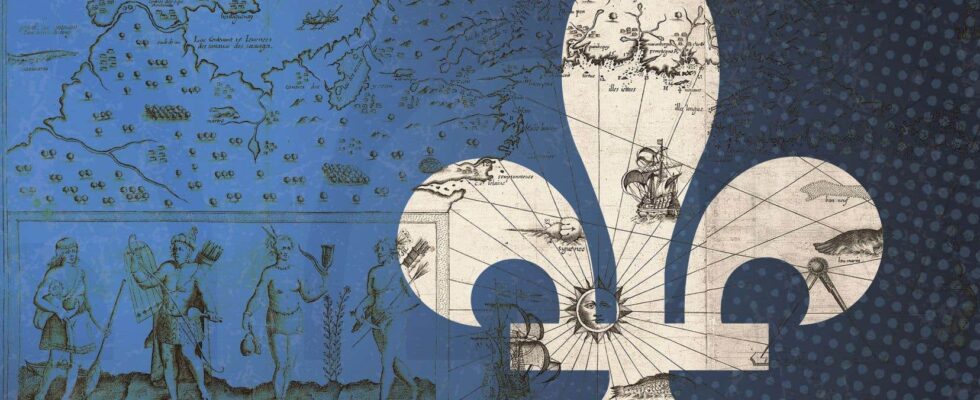Let us rejoice at the opportunity given to us to reflect on our past not only among specialists, but within the framework of a public debate. As a scientist and citizen, I felt authorized to add my voice to the debate. It is in this spirit that I submit the following proposals.
Those responsible for the National Museum of the History of Quebec face a difficult task; there are several ways to present the past of a nation. The choice of a synthesis perspective will be complex. Here are examples of questions and themes they may want to explore.
An angle
An overview of Quebec’s past will require choosing an angle and lighting broad enough to provide an overall view, precise enough to avoid dispersion. I think it could be a long fight. It’s a scenario that resembles us and brings us together. It would come in various frames…
On the political plan. The emergence of the nation and its evolution, the struggles to free it from Anglo-British colonialism, a checkered journey of advances and setbacks, democratic ideals pursued from the start of the British Regime, the journey of the idea of independence, incessant negotiations that are too often sterile with the English-speaking power, the growing recourse to the State as a collective actor, some remarkable leaders;
On a cultural level. The fragile minority culture, which ensures its survival, but also its development, while integrating its diversity;
On a religious level. A faith firmly anchored in consciences, coupled with a strong institutional base which was a powerful factor of social cohesion. But it was also the place of an authoritarianism which was strongly opposed and which contributed to the decline of the Church;
On the economic plan. The early affirmation of a class of French-speaking entrepreneurs, the rise of a society which will achieve prosperity in a context of North American dependence and competition;
On the social plan. A long period of poverty and inequality, then an energetic recovery that places Quebec among the most equitable societies on the continent.
The contradictory theses
A history museum does not have to provide answers to all questions, especially those that divide specialists. Here are three examples: a) the effects of the Conquest, b) the causes of our delays, c) the interpretation of the Quiet Revolution. In these cases, it may be appropriate to present the evidence and let the public form its judgment.
The choice of episodes
We will surely start this story with the first settlements (writing or not). Regarding New France, we will recall the familiar gallery of main characters: Champlain, Frontenac, a few missionaries, the great founders and others, to which will be added a few indigenous figures. We will also highlight the remarkable achievements (first explorations, land clearings, military acts, etc.). We will not fail to mention the less glamorous aspects, notably the features of French colonialism: deprivation of freedoms (ban on publications and assemblies), radical mercantilism, corruption, exploitation of Indigenous people.
Concerning the XIXe and XXe centuries, many episodes and characters arouse admiration: fighters for decolonization, independence, first entrepreneurs, feminist pioneers, renowned writers and artists, activists of the trade union movement, dedication of the most modest members of the clergy, reduction of inequalities and poverty (since the 1960s), expansion of rights, generous social policies and other advances associated with the Quiet Revolution. Almost all of these changes have had to overcome internal or external resistance.
We will also show darker sides there: unequal power relations, poverty, inequalities, classes, oppression of women and workers (among the lowest paid in Canada in 1960), under-education, opposition of the Church to the female vote and compulsory education, lamentable state of public health (example: infant mortality), long practice of censorship.
The stereotypes
We will ensure that this reconstruction of our past is based on recent research in order to dispel the old stereotypes which have long discredited our memory: a society dominated by reactionary conservatism; a submissive, homogeneous, closed in on itself, xenophobic population; overfertility; elites hostile to industrialization and modernity; an all-powerful clergy.
The diversity
The presentation of the past can legitimately focus primarily on the majority group, while also reflecting the fate of various minorities. We will wonder how the relationships between these groups evolved, how the State came to think about their integration after a long period of marginalization. So: embrace the whole nation, in its ethnocultural composition.
The first occupants
It is imperative to associate with our history the Indigenous people whose journey has crossed that of Quebec in so many ways. We will have to show the alliances, the friendships, as well as the mistreatment we inflicted on them. We think of the era of New France, but also of the later period marked by the destruction of their hunting territories and the forced displacement of their occupants to the reserves, consequences of the industrialization of Northern Quebec.
The emotions
Studying the past inevitably arouses emotions that need not be repressed, far from it. Here, the register is extensive: admiration, shame, courage, taste for commitment, pursuit of an ideal and, yes, of course, pride… But these emotions must not be artificially hyped; they must emerge from the characters, the episodes, the facts presented.
Heroes
We will perhaps be careful not to multiply the heroes. It is an ultimate distinction which owes its value to remarkable acts, but also to its rarity. The memory of inspiring figures also serves posterity well. They seem closer, more within the reach of ordinary mortals.
The spatial framework
Finally, it will be appropriate to highlight the deployment of our society beyond its borders. Our ancestors were not sedentary people stuck to the soil of their homeland. Their history is closely linked to Canada, the United States, Great Britain, France, Rome; let us also think of the action of missionaries throughout the world.
